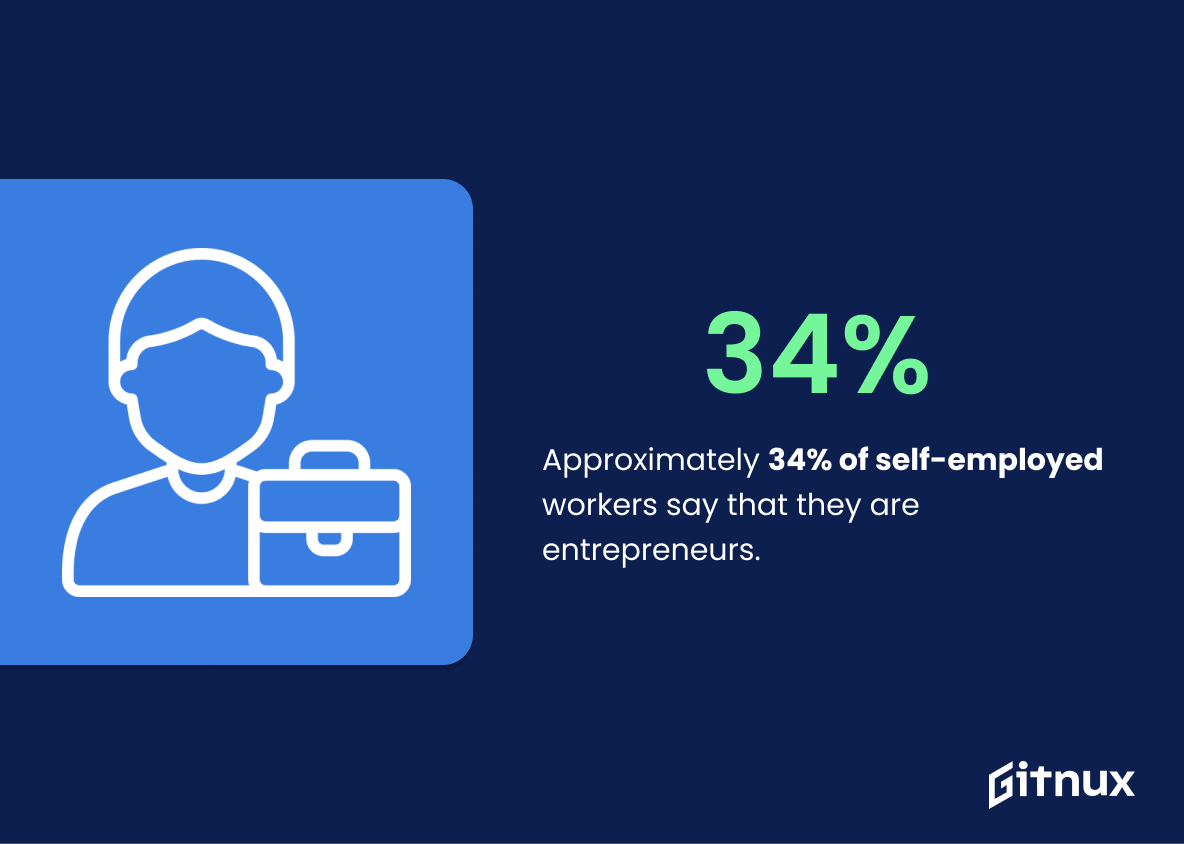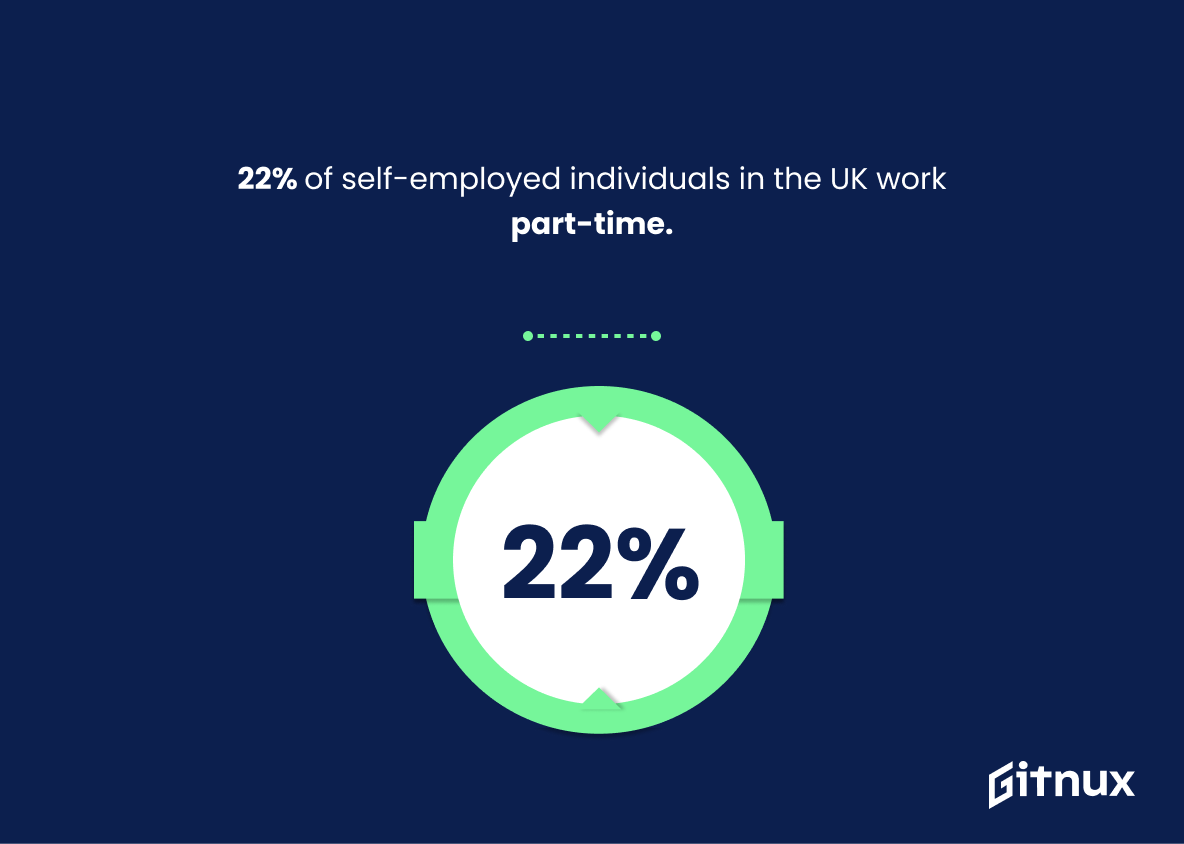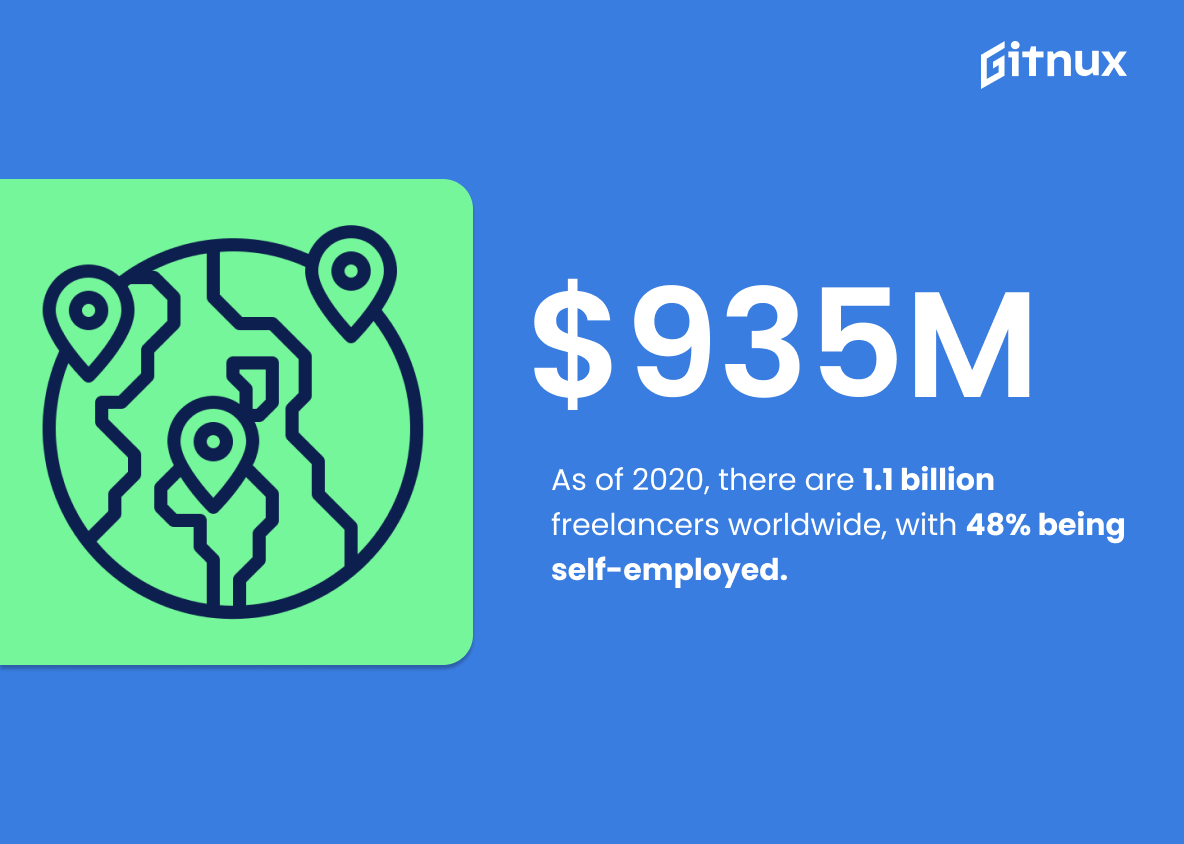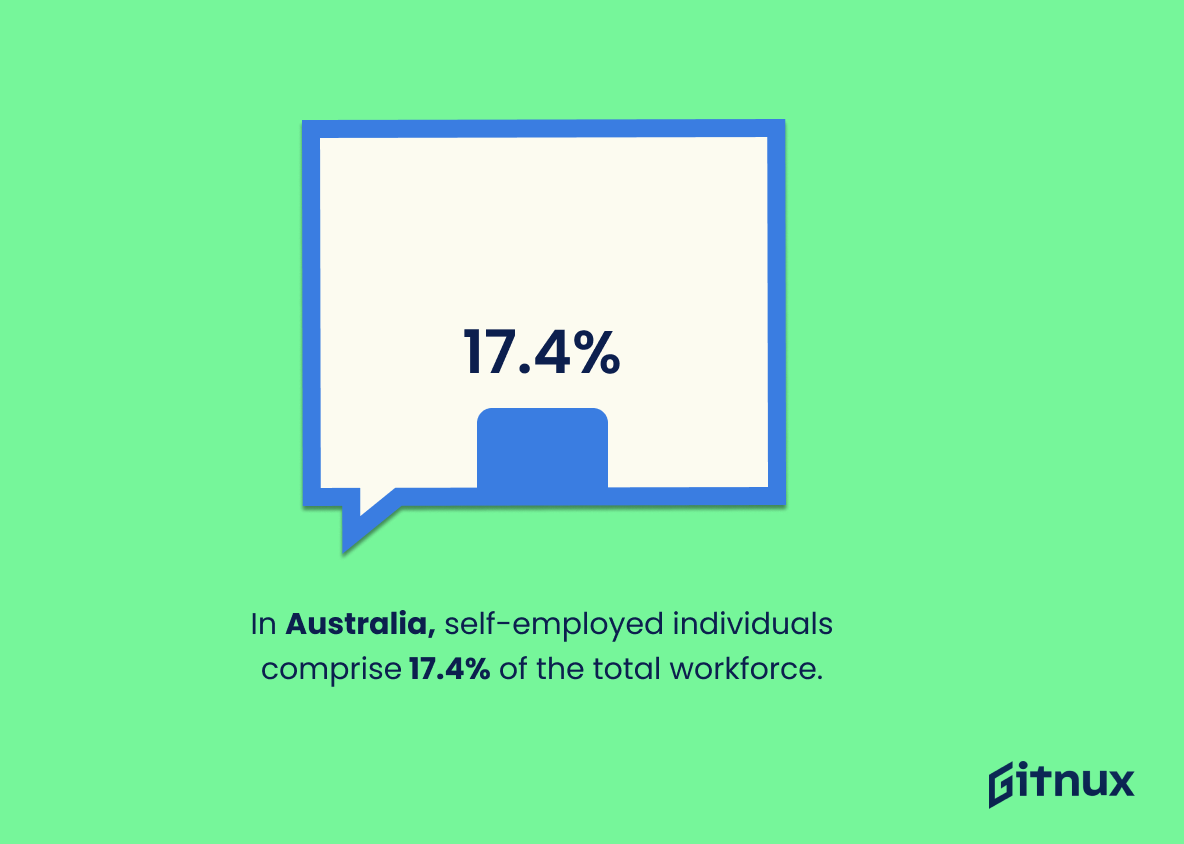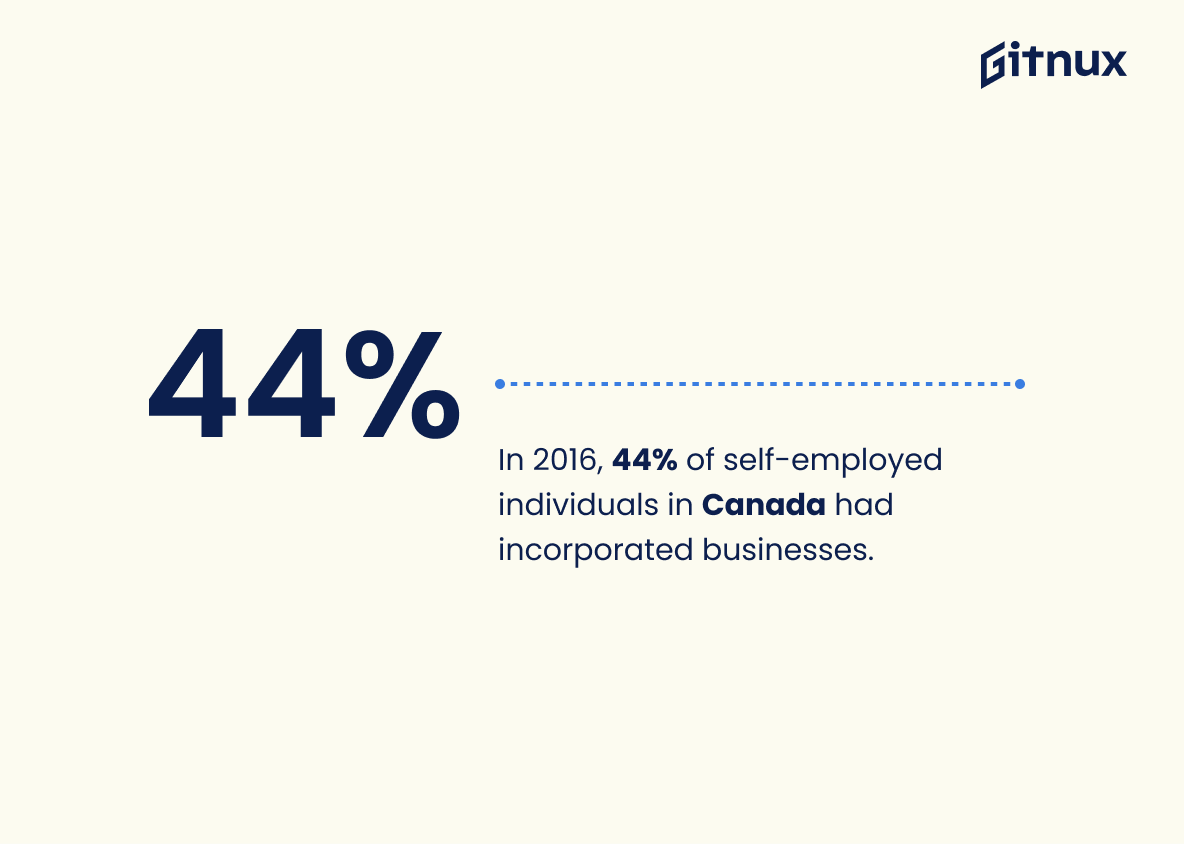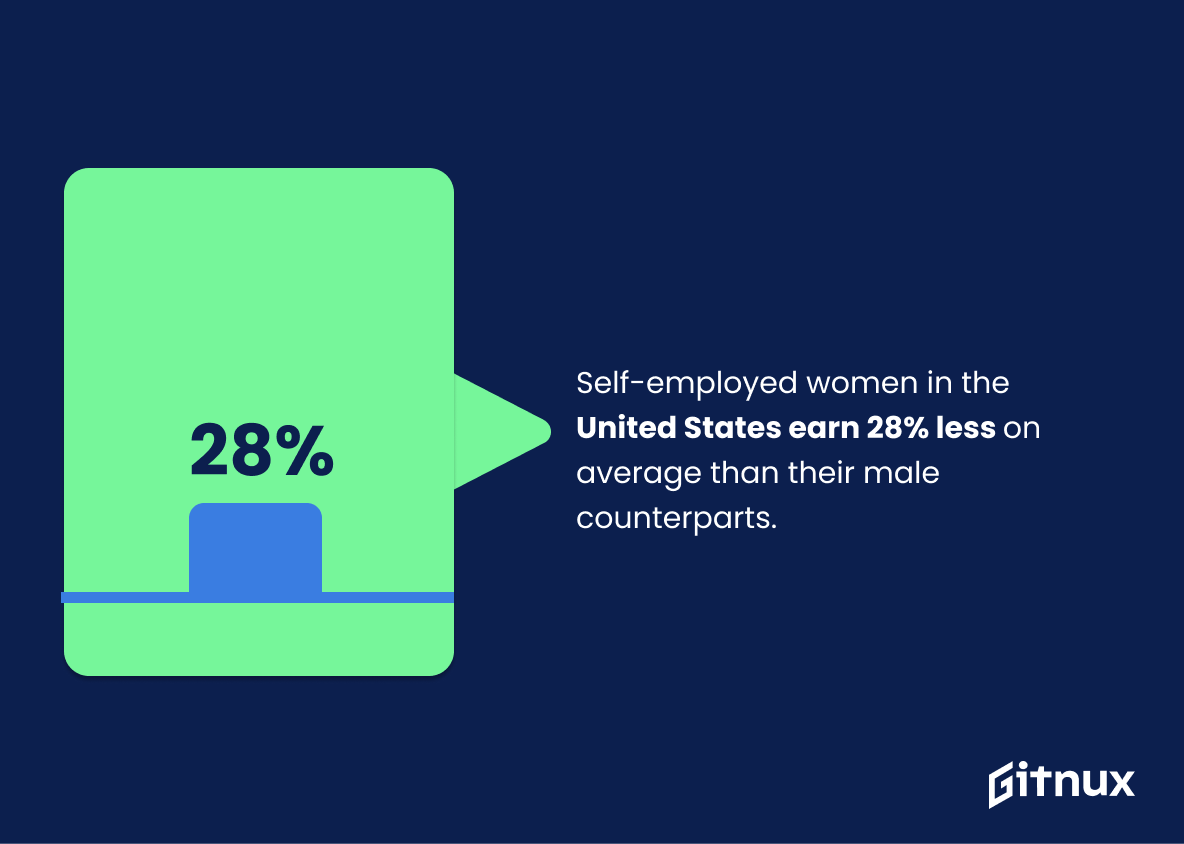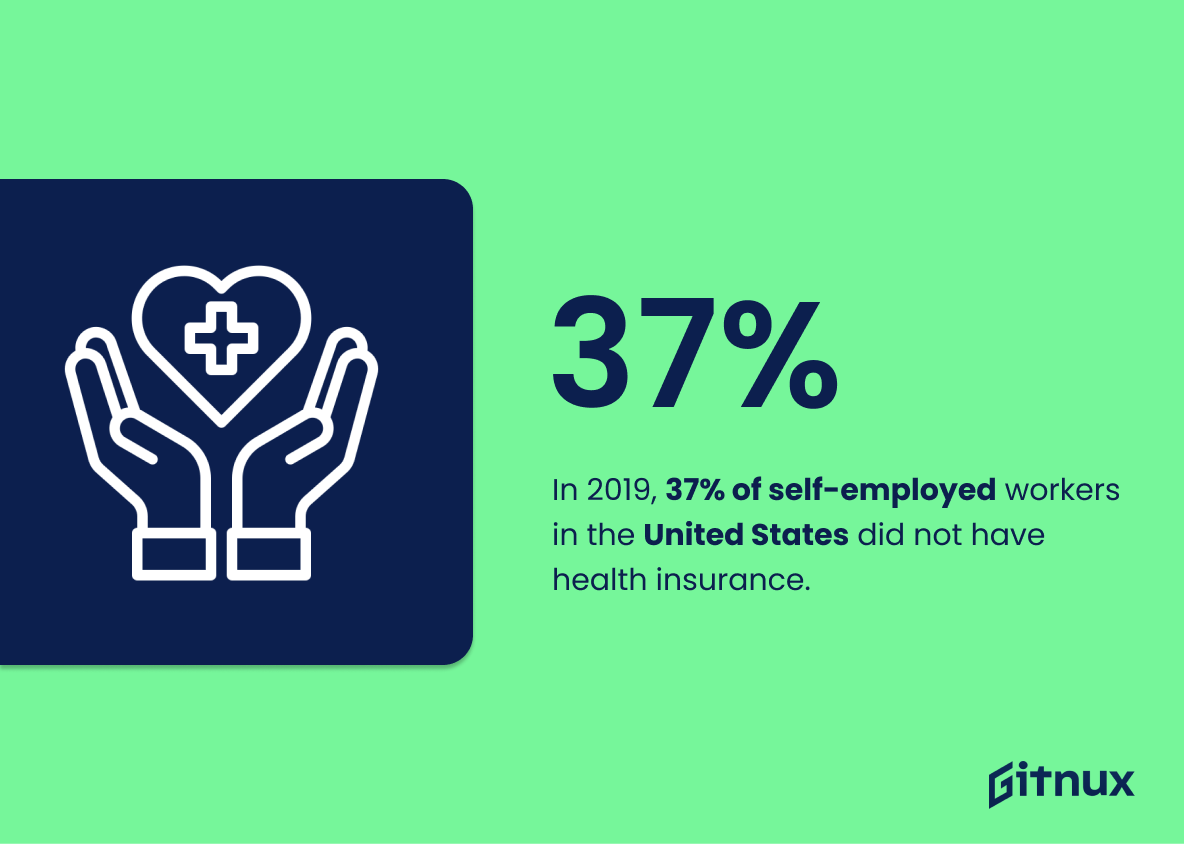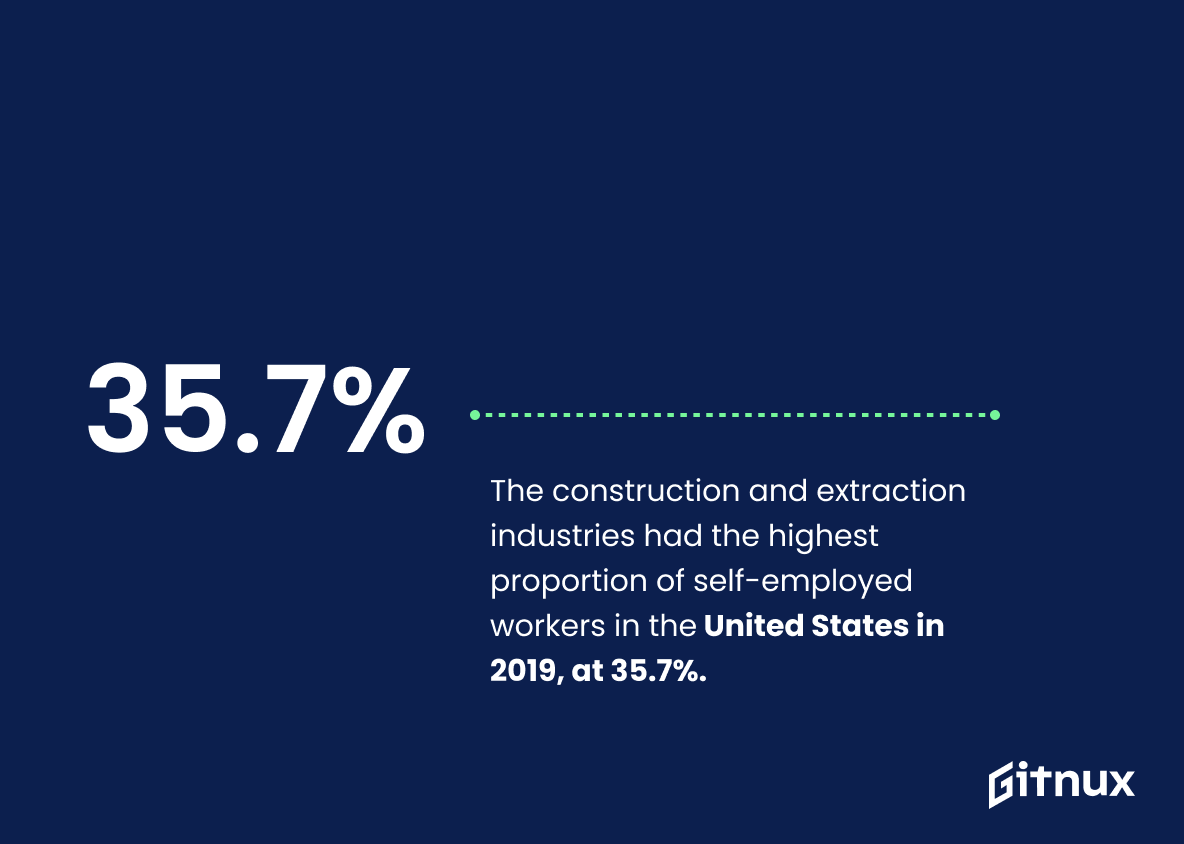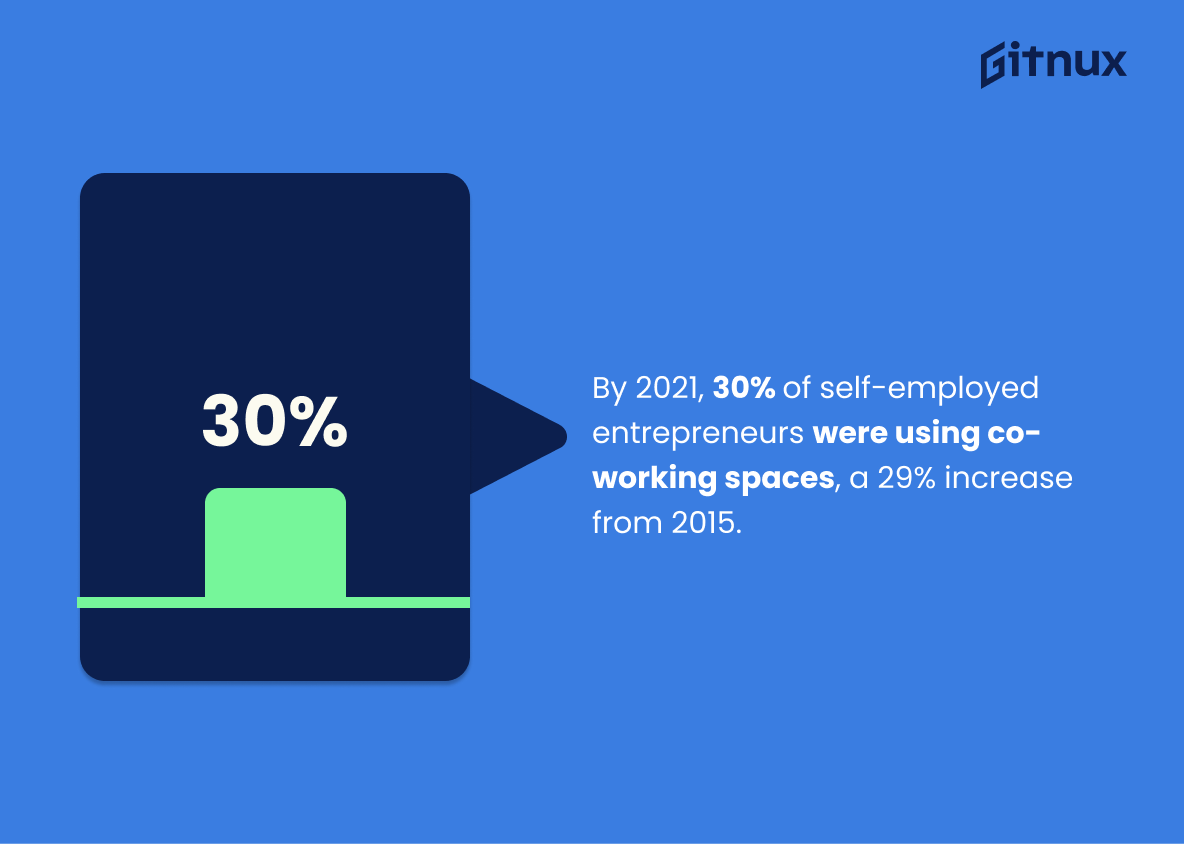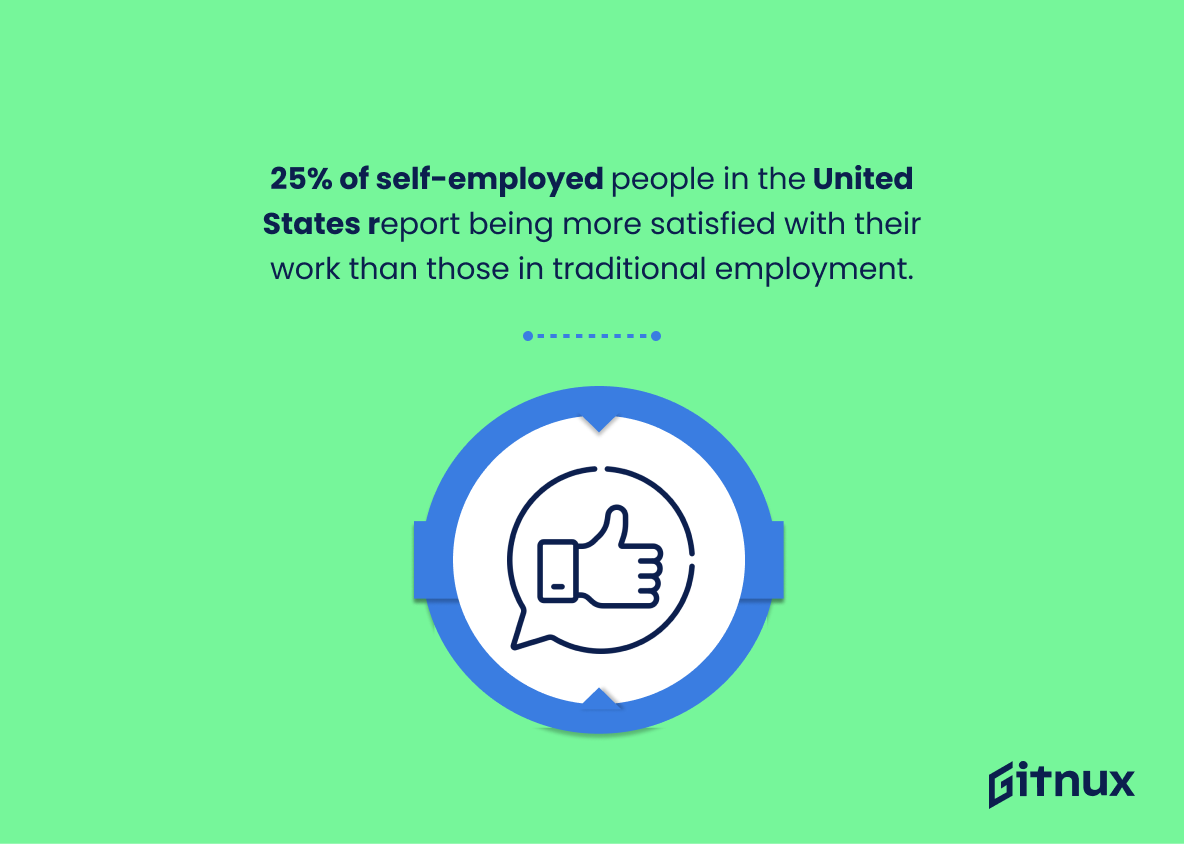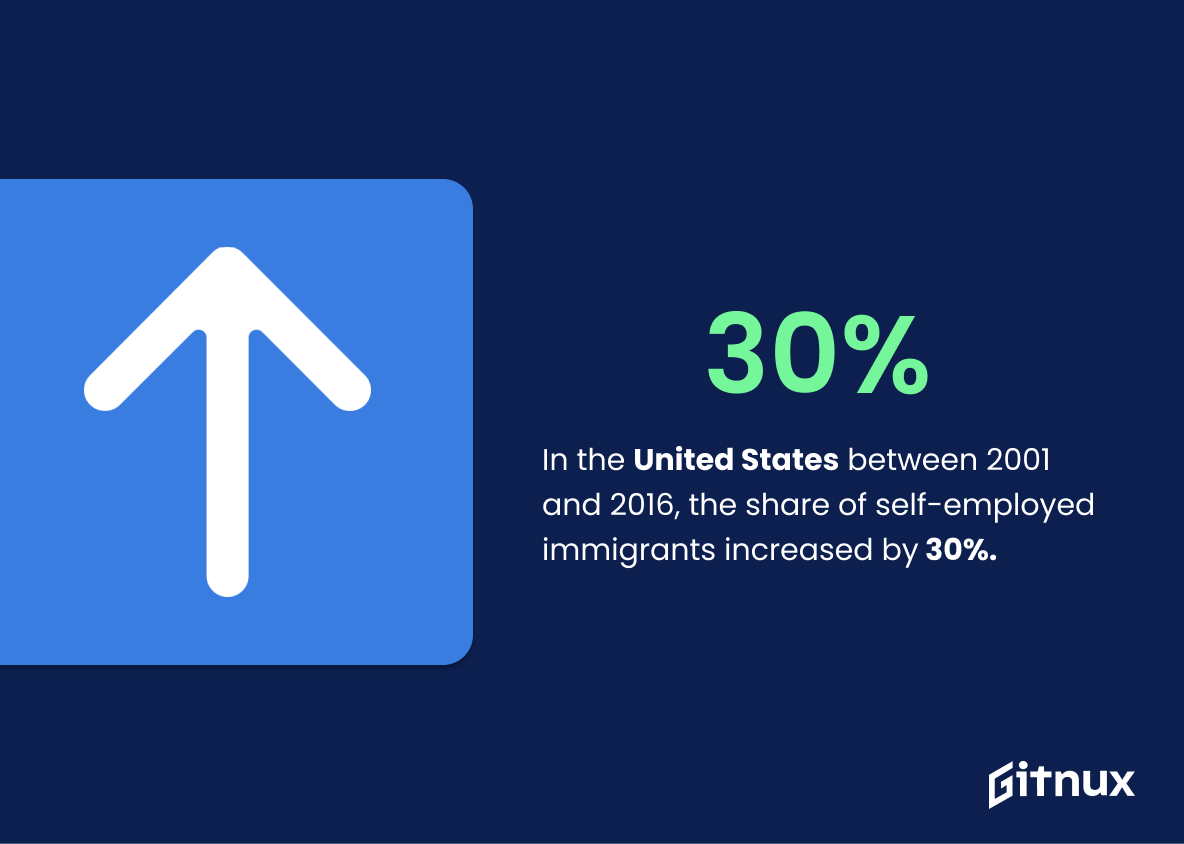The self-employed population is an important part of the global workforce, and understanding their statistics can help us better understand the current state of employment. This blog post will explore 20 different statistics about self-employment in countries around the world, including information on income levels, industry breakdowns, age demographics and more. We’ll look at data from sources such as Statista, Bank of America Small Business Owner Report and The Future Of Freelancers report to get a comprehensive view into this growing sector. So let’s dive in.
Self Employed Statistics Overview
Approximately 34% of self-employed workers say that they are entrepreneurs.
This statistic is significant in the context of a blog post about Self Employed Statistics because it provides insight into the mindset of self-employed workers. It shows that a large portion of self-employed individuals view themselves as entrepreneurs, suggesting that they are driven by ambition and a desire to create something of their own. This statistic can be used to illustrate the entrepreneurial spirit of the self-employed and the potential for success that comes with it.
In the United States, the professional, scientific, and technical services industry has the highest number of self-employed individuals, accounting for 2.5 million people in 2018.
This statistic is a telling indication of the growing trend of self-employment in the United States. It shows that the professional, scientific, and technical services industry is leading the way in terms of the number of self-employed individuals, with 2.5 million people taking the plunge into self-employment in 2018. This is a significant figure that speaks to the potential of self-employment and the opportunities it can provide. It is an important statistic to consider when discussing the state of self-employment in the United States.
Between 2005 and 2015, the number of self-employed people over the age of 65 increased by 48% in the United States.
This statistic is a powerful indicator of the growing trend of self-employment among the elderly population in the United States. It shows that more and more seniors are taking the initiative to become their own boss and pursue their own business ventures. This is an important development, as it demonstrates that seniors are not only capable of working, but also of taking on the responsibility of running their own business. This statistic is a testament to the resilience and determination of the elderly population, and it is an inspiring example for those considering self-employment.
In the UK, 4.4 million people were self-employed in 2019, accounting for 15% of the working population.
This statistic is a powerful indicator of the prevalence of self-employment in the UK. It demonstrates that a significant portion of the working population is self-employed, and thus highlights the importance of understanding the challenges and opportunities that come with this type of work. This statistic is essential for any blog post about self-employed statistics, as it provides a clear picture of the current state of self-employment in the UK.
22% of self-employed individuals in the UK work part-time.
This statistic is significant in the context of a blog post about Self Employed Statistics, as it provides insight into the prevalence of part-time self-employment in the UK. It highlights the fact that a significant portion of the self-employed population is not working full-time, and may be relying on part-time work to supplement their income. This information can be used to inform policy decisions and to better understand the needs of the self-employed population.
As of 2020, there are 1.1 billion freelancers worldwide, with 48% being self-employed.
This statistic is a powerful indicator of the growing trend of self-employment in the modern world. It shows that more and more people are taking the plunge and becoming their own boss, and that the freelance economy is thriving. This is an important point to make in a blog post about self-employed statistics, as it demonstrates the potential of self-employment and the opportunities it can provide.
In Australia, self-employed individuals comprise 17.4% of the total workforce.
This statistic is a telling indication of the prevalence of self-employment in Australia. It demonstrates that a significant portion of the workforce is made up of individuals who are taking the initiative to work for themselves. This statistic is important to consider when discussing the impact of self-employment on the economy and the job market.
In 2016, 44% of self-employed individuals in Canada had incorporated businesses.
This statistic is a telling indication of the prevalence of incorporated businesses among self-employed individuals in Canada. It provides insight into the business landscape of the country, and can be used to compare the number of incorporated businesses to those that are unincorporated. This information can be used to inform decisions about the types of businesses that are most successful in Canada, and can be used to inform strategies for self-employed individuals.
Self-employed women in the United States earn 28% less on average than their male counterparts.
This statistic is a stark reminder of the gender pay gap that still exists in the United States. It highlights the fact that even when women are taking the initiative to become self-employed, they are still not receiving the same pay as their male counterparts. This is an issue that needs to be addressed, and it is important to recognize the disparities that still exist in the workplace.
In 2020, the self-employment rate in OECD countries was 15.2%.
This statistic is a telling indication of the prevalence of self-employment in OECD countries. It provides a snapshot of the current state of self-employment in the region, and can be used to compare the rate of self-employment across countries. This data can be used to inform policy decisions and to identify areas where more support is needed for self-employed individuals.
In 2019, 37% of self-employed workers in the United States did not have health insurance.
This statistic is a stark reminder of the precariousness of self-employment in the United States. It highlights the fact that many self-employed workers are unable to access the same level of health insurance coverage as those with traditional employment, leaving them vulnerable to financial hardship in the event of illness or injury. This statistic is a call to action for policy makers to ensure that self-employed workers have access to the same level of health insurance coverage as those with traditional employment.
36% of self-employed workers in the United States have a bachelor’s degree or higher.
This statistic is significant in the context of self-employed statistics because it demonstrates the educational level of those who have chosen to pursue self-employment. It shows that a large portion of self-employed workers have a college degree, which indicates that they have the knowledge and skills necessary to be successful in their chosen field. This statistic also highlights the importance of education in the self-employment sector, as it suggests that having a college degree can be beneficial for those looking to start their own business.
The construction and extraction industries had the highest proportion of self-employed workers in the United States in 2019, at 35.7%.
This statistic is a telling indication of the prevalence of self-employment in the United States. It highlights the fact that the construction and extraction industries are leading the way in terms of the number of self-employed workers, with a whopping 35.7% of the workforce in these industries being self-employed. This statistic is important to consider when discussing the overall trend of self-employment in the United States, as it provides a clear picture of the industries that are most likely to employ self-employed workers.
By 2021, 30% of self-employed entrepreneurs were using co-working spaces, a 29% increase from 2015.
This statistic is a testament to the growing trend of self-employed entrepreneurs utilizing co-working spaces. It shows that more and more people are recognizing the benefits of these shared workspaces, such as increased productivity, networking opportunities, and cost savings. This is an important development for the self-employed community, as it indicates that more and more people are taking advantage of the resources available to them to help them succeed in their businesses.
25% of self-employed people in the United States report being more satisfied with their work than those in traditional employment.
This statistic is a powerful indicator of the potential benefits of self-employment. It suggests that a quarter of those who have taken the plunge into self-employment are reaping the rewards of greater job satisfaction. This statistic is a testament to the potential of self-employment to provide a more fulfilling career path than traditional employment. It is a reminder that self-employment can be a viable option for those looking to find greater satisfaction in their work.
In the United States between 2001 and 2016, the share of self-employed immigrants increased by 30%.
This statistic is a powerful indicator of the growing trend of self-employment among immigrants in the United States. It speaks to the resilience and ambition of immigrants, who are increasingly taking the initiative to become their own bosses and create their own opportunities. This statistic is a testament to the potential of immigrants to contribute to the economy and society of the United States.
Conclusion
The self-employment landscape is constantly evolving, with new trends and statistics emerging every year. Self-employed individuals make up a significant portion of the workforce in many countries around the world, including the United States, Canada, Australia, and the UK. The average annual income for these workers varies widely depending on their industry and location but generally falls below that of traditional employees. Additionally, there are disparities between male and female self-employed workers when it comes to earnings as well as access to health insurance coverage. As more people turn towards entrepreneurship or freelancing opportunities due to economic uncertainty or lifestyle preferences, understanding current self-employment statistics can help inform decisions about career paths going forward.
References
0. – https://www.smallbizgenius.net
1. – https://www.data.oecd.org
2. – https://www.50.statcan.gc.ca
3. – https://www.bls.gov
4. – https://www.sba.gov
5. – https://www.ons.gov.uk
6. – https://www.getvero.com
7. – https://www.statista.com
8. – https://www.iwpr.org
9. – https://www.pewresearch.org
10. – https://www.research.qut.edu.au
11. – https://www.nber.org
12. – https://www..deloitte.com
13. – https://www.about.bankofamerica.com
14. – https://www.smallbiztrends.com
ZipDo, cited June 2023: Self Employed Statistics
